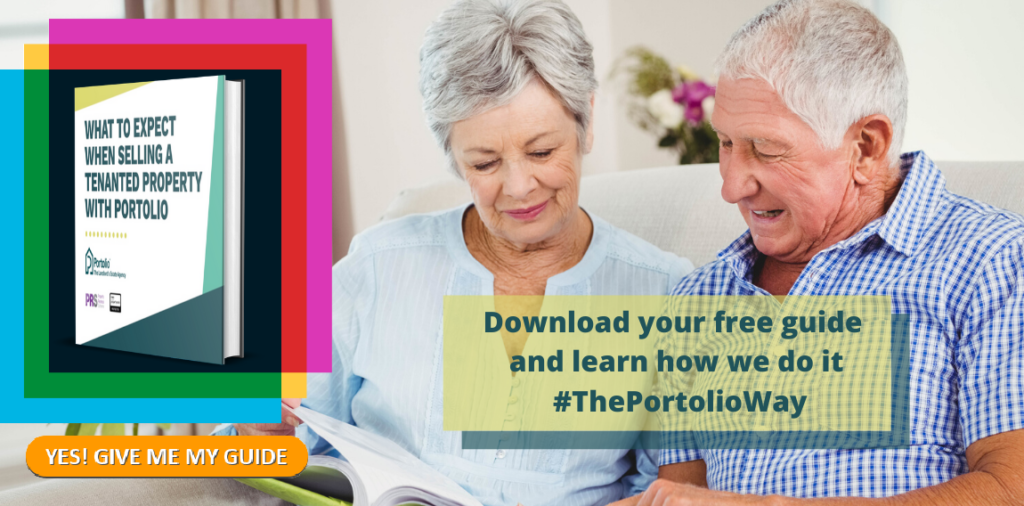“Buy-To-Let is Dead”. I’ve read the headlines and from what I see everyday at Portolio, and what I read in more balanced articles, reports of its “death” are greatly exaggerated.
What Our Clients Say
Certainly, the private rented sector is changing and landlords will adjust to new ways of getting the most from their property investment.
Portolio is an estate agent, we sell tenanted property and naturally our clients are landlords. None of them are contacting us in a panic and we’re not flooded with enquiries from landlords bailing out because of tax or legislation changes. Our clients advise us that they are selling for a variety of reasons.
When we do hear a reference to the tax changes then it’s from our clients who are selling large property portfolios. For those large scale landlords, the new Section 24 tax legislation will have an especially large impact on their business over the next couple of years, if not already.
The New Legislation
Landlords must review their tax position and self assessment (many people’s least favourite thing to do!) is becoming a more and more pivotal activity for them.
In my opinion, I think it’s a real shame for many landlords who bought property as a retirement plan, and now see that plan being “messed about with” by Government legislation. Simply stated, nobody could see it coming when they were buying property 10+ years ago. Again, that’s just my opinion.
What is Section 24?
Landlords are losing the ability to offset the mortgage interest payments against the rent they receive from their tenant/s.
This means, they will be taxed on almost the full rental revenue. Therefore, potentially impacting their tax rate and the profitability of their property business.
The changes will be phased in gradually over 4 years and started on 5th April 2017. By 2020, 100% of finance costs (mortgage payments) will be restricted to 20% tax relief only.
Other significant tax changes;
- An increase on the additional dwelling supplement (ADS) from 3% to 4% (from 25/01/2019). The initial ADS of 3% was introduced in 2016.
- The wear and tear allowance was removed in 2016; landlords now deduct real costs of replacing items in their property, and not the old 10% allowance.
So that’s about it for tax but there has been other legislation introduced that has been a challenge for landlords in Scotland; a new lease in the shape of the PRT and the soon to be introduced new minimum energy rating requirements.
The Impact
The new buy-to-let (BTL) legislation affects every single landlord but it doesn’t affect them equally. It depends on a number of factors with the following 2 characteristics having a big effect;
- How many properties a landlord has i.e. what is there rental income.
- How big are the mortgages on those properties i.e. loan to value (LTV).
I’m not an accountant and not qualified to give advice, each landlord has their own tax and employment situation…..but my understanding is that having a high rental income from properties that are “heavily mortgaged” could lead to a net loss i.e. the landlord could lose money.
Section 24 can push basic-rate taxpayers into the higher-rate bracket, as their mortgage interest suddenly counts as income.
There really is a lot of opinion out there and some say that it’s actually the landlords with 1 to 3 properties that will be most affected.
It’s not what I’ve witnessed so far but the true story might only come out after Section 24 has been fully tapered in (around the tax bills in 2021). It’s worth noting that those landlords, who have 1 to 3 properties, make up 60% of the UK’s private rented sector, so it’s a significant chunk.
To Divest or Not to Divest
After analysis, “portfolio landlords” will likely be displeased with the situation, and it wouldn’t be a huge surprise if they took the easiest route out, which is to sell.
However, if they have the motivation, then they could take take steps to stay in the private rented sector by selling some, changing their lending position and going back out to buy more, maybe as a Ltd business.
According to mortgage broker stats from 2018, up to 80% of new buy to let mortgage applications were for limited companies, so there is a trend towards this method. It makes sense for many, with the main incentive being that companies can still offset mortgage interest against rent collected.
Some landlords have also managed to move their properties directly into a new Ltd business, so landlords should definitely speak to their accountant, and mortgage broker, to look into their options.
It was slightly concerning that back in March 2018, nearly two thirds of landlords surveyed by propertypriceadvice.co.uk stated they were considering selling at least one property and 20% of landlords hadn’t looking into it…..so they might be getting a bit of a shock right now.
I think it’s possible that, with all the negative publicity around buy to let, even those landlords who continue to make a profit might feel it’s time to sell up. Who knows!? I very much hope landlords stick with their buy to let businesses.
Good Signs
More recently, it’s great to hear, in the latest data from UK Finance, that the number of buy-to-let remortgages is was higher in 2018 than 2017. This suggests that UK landlords remain committed to their buy to let property, for at least another couple of years.
The report stated that 12,400 new buy-to-let remortgages were completed in December 2018, which is 23.3% more than December 2017, and over the whole of 2018 the number of landlord remortgages was up significantly.
The Private Rented Sector is so important to Scotland’s housing, with around 15% of all housing being privately rented, and it’s vital that it continues to provide for a society that is becoming more and more inclined to rent, rather than buy.
Buy-to-let is going to change, no doubt. It seems inevitable that there will be sales of current rented stock and there is also the rise of Build-to-Rent.
New Purchases Down
Buying activity from property investors is down. As reported this week, in The Financial Times, property investors are less active than in 2011. At that point landlords were snapping up as many as 2 in every 5 UK homes bought (that’s 18.7%) and now it’s 1 in every 10. Stats from Hampton International.
So, statistically, there is less buying activity but the very positive signs for me, and for Portolio, is that we’re having no problem selling tenanted properties to motivated property investors.
The Future of Buy-To-Let
Individual investors should not be deterred from buy-to-let! Demand for rental housing is stronger than ever, the cost of debt remains relatively cheap and the housing shortage is likely to continue for a very long time.
The general opinion is that all the legislation is part of the Government’s master plan make the Private Rented Sector the domain of institutions, and not the individual landlords we are more used to.
Any investment decision requires care and expertise. It’s prudent for landlords to keep abreast of wider market conditions and how other landlord types are overcoming these obstacles e.g. company landlords.
The true story of the tax and legislation changes will unfold over the next 3 to 4 years but I expect the private rented sector to survive just fine. Build-to-Rent will become a big thing but regular property investors will play their part as, essentially, property investment still gives a solid ROI and is a great way to create wealth.
____
Written by Chris Wood, MD & Founder of Portolio
Get in touch on 07812 164 842 or email to [email protected]


Comments